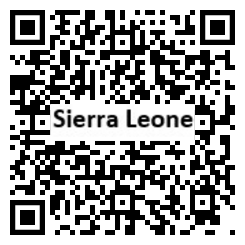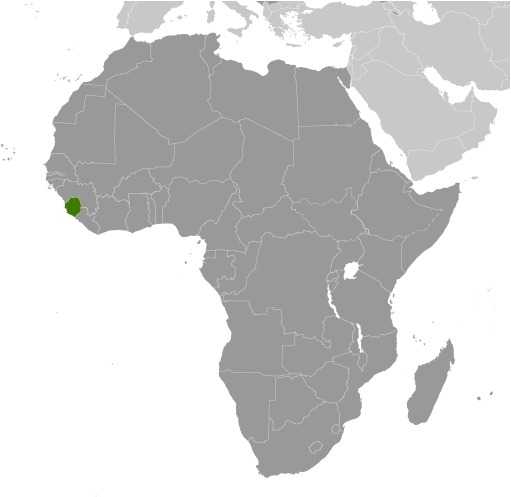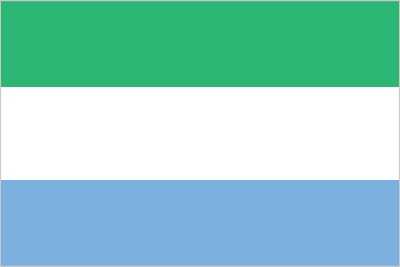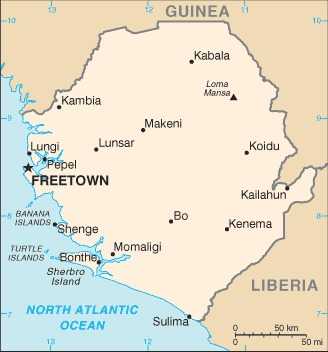Introduction
Background
The British set up a trading post near present-day Freetown in the 17th century. The colony gradually expanded inland during the course of the 19th century. Independence was attained in 1961. An authoritarian regime in the 1960s led to a lengthy civil war that ended in 2002, and the country has since conducted democratic elections.
Geography
Area
total: 71,740 sq km
land: 71,620 sq km
water: 120 sq km
Climate
tropical; hot, humid; summer rainy season (May to December); winter dry season (December to April)
Natural resources
diamonds, titanium ore, bauxite, iron ore, gold, chromite
People and Society
Population
total: 9,121,049
male: 4,515,726
female: 4,605,323 (2024 est.)
Ethnic groups
Temne 35.4%, Mende 30.8%, Limba 8.8%, Kono 4.3%, Korankoh 4%, Fullah 3.8%, Mandingo 2.8%, Loko 2%, Sherbro 1.9%, Creole 1.2% (descendants of freed Jamaican slaves who were settled in the Freetown area in the late-18th century; also known as Krio), other 5% (2019 est.)
Languages
English (official, regular use limited to literate minority), Mende (principal vernacular in the south), Temne (principal vernacular in the north), Krio (English-based Creole, spoken by the descendants of freed Jamaican slaves who were settled in the Freetown area, a lingua franca and a first language for 10% of the population but understood by 95%)
Religions
Muslim 77.1%, Christian 22.9% (2019 est.)
Population growth rate
2.32% (2024 est.)
Government
Government type
presidential republic
Capital
name: Freetown
Executive branch
chief of state: President Julius Maada BIO (since 27 June 2023); Vice President Mohamed Juldeh JALLOH (since 27 June 2023); note - the president is chief of state, head of government, and Minister of Defense
head of government: President Julius Maada BIO (since 27 June 2023); Vice President Mohamed Juldeh JALLOH (since 27 June 2023)
Legislative branch
description: unicameral Parliament (149 seats; 135 members directly elected in single-seat constituencies by a district block proportional representation vote and 14 seats for "paramount chiefs" indirectly elected to represent the 14 provincial districts; members serve 5-year terms)
Economy
Economic overview
low-income West African economy; primarily subsistent agriculture; key iron and diamond mining activities suspended; slow recovery from 1990s civil war; systemic corruption; high-risk debt; high youth unemployment; natural resource rich
Real GDP (purchasing power parity)
$14.068 billion (2022 est.)
$13.598 billion (2021 est.)
$13.062 billion (2020 est.)
Real GDP per capita
$1,600 (2022 est.)
$1,600 (2021 est.)
$1,600 (2020 est.)
Agricultural products
cassava, rice, oil palm fruit, vegetables, sweet potatoes, milk, citrus fruits, groundnuts, fruits, sugarcane (2022)
Industries
diamond mining; iron ore, rutile and bauxite mining; small-scale manufacturing (beverages, textiles, footwear)
Exports
$1.114 billion (2021 est.)
$661.505 million (2020 est.)
$632.405 million (2019 est.)
Exports - partners
China 54%, Belgium 12%, UAE 6%, Germany 4%, Netherlands 4% (2022)
Exports - commodities
iron ore, titanium ore, diamonds, wood, aluminum ore (2022)
Imports
$1.869 billion (2021 est.)
$1.386 billion (2020 est.)
$1.818 billion (2019 est.)
Imports - partners
China 33%, India 12%, Turkey 9%, US 6%, UAE 5% (2022)
Imports - commodities
rice, plastic products, refined petroleum, vaccines, packaged medicine (2022)
Exchange rates
leones (SLL) per US dollar -
Exchange rates:
14.048 (2022 est.)
10.439 (2021 est.)
9.83 (2020 est.)
9.01 (2019 est.)
7.932 (2018 est.)
Page last updated: Wednesday, May 15, 2024




